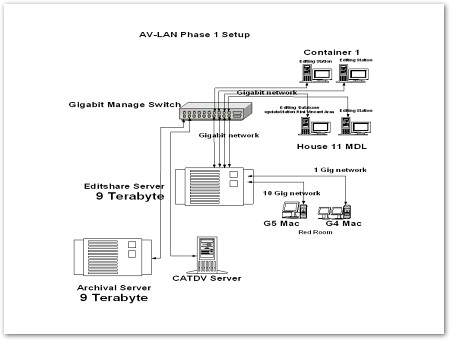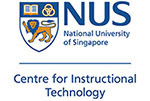
The Audio-Visual Information-Technology Local Area Network (AV IT-LAN) is a combination of a file-sharing system and an archival system for video projects.
With an average of almost 100 video projects (both productions and live recording) each year, there needs to be a way to enable efficient use of production resources as well as a systematic, searchable and thorough archival system.
The AV IT-LAN fulfils these requirements through a combination of two solutions. The first is EditShare, an all-in-one collaborative shared video storage solution. The EditShare Server, pictured in the diagram, provides central storage for all video projects. It is connected to the PCs of CIT's Multimedia staff, allowing each person to work on their part of the video project from their workstation.
While EditShare runs on LINUX, it connects across platforms, allowing projects to be shared between Windows and Macintosh computers. Likewise, EditShare supports Adobe Premiere and Apple's Final Cut Pro.
This is an improvement over the previous manual system, where anyone assigned to the video production had to digitise the video footage on their personal PCs before handing it to others who might be working on the same project. This was particularly problematic as CIT is spread over three locations on campus. With EditShare, the footage is digitised once, and is shared out to the relevant personnel, regardless of their physical location.
The second element in the AV-IT LAN is CatDV. CatDV allows CIT to archive source files, the final output and other media related to the production such as graphics, photos, scripts and storyboards.
On project completion, the producer will clean up the production materials, saving the necessary video and data. These will then be sent to a staging area, where the video elements will be compared to a checklist. The project is only archived once all required materials have been submitted. Once this is done, archival with the CatDV system will proceed. This new workflow also provides for a physical tape backup which will be catalogued to correspond to CatDV's database.
With CatDV, CIT staff can easily search, locate and procure previously recorded footage. This benefits the NUS community as staff will able to source for archival material. It also aids in projects where videos have to be updated.





